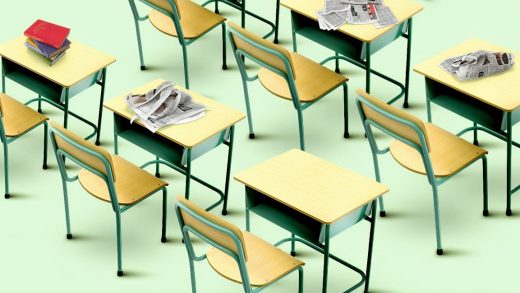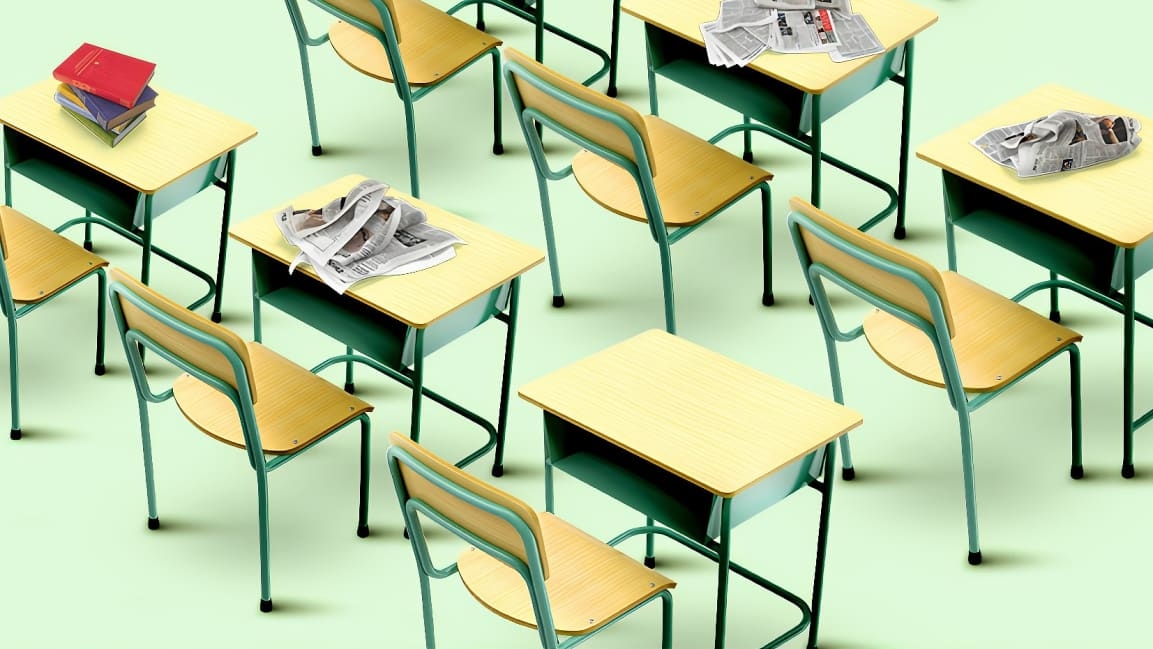Inside the quest to reopen schools—by moving classes outside
Sharon Danks has been working for more than 20 years to get schoolkids outdoors. As a trained landscape architect and urban planner, she says too many schools across the country ignore the educational and health benefits offered by the outdoor spaces of their campuses. This is something she’s been trying to change through her nonprofit Green Schoolyards America, based in Berkeley, California, and something that’s become an international topic of concern since the coronavirus pandemic caused the mass closure of schools.
With the next school year fast approaching and no sign that schools will be able to operate as usual, or whether they’ll open at all, Danks’s mission to move learning outdoors has a sudden new urgency.
In April, Danks began having conversations about reopening local schools with three other organizations in the San Francisco Bay Area, the San Mateo County Office of Education, the Lawrence Hall of Science museum in Berkeley, and the environmental education nonprofit Ten Strands. Within a month, as the impact of the pandemic spread, it was clear this was much more than a local question.
In early June, the organizations cohosted a webinar on responding to COVID-19 by using outdoor spaces for education. More than 1,000 people from 40 states and eight countries registered.
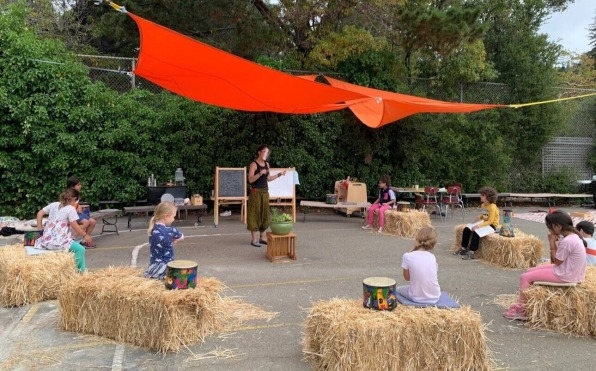
Ideas began flowing, and the organizations decided to harness people’s interest and energy. They created the National COVID-19 Outdoor Learning Initiative, an effort to create guidelines schools can follow to use their outdoor spaces more effectively in order to bring back face-to-face learning. Volunteers from across the country are now participating in 10 working groups focused on different aspects of moving classes outdoors, from funding to safety to the physical infrastructure needed to seat and teach students outside.
“The central problem that we were looking at is that none of our schools were built to be able to accommodate kids 6 feet apart inside the building,” Danks says. But what most schools are equipped with is outdoor space and playgrounds—spaces that can be adapted for outdoor learning. Through the use of physical objects such as shade structures and weatherproof seating and adjusted lesson plans that reduce teachers’ reliance on computer screens and overhead projectors, outdoor classrooms can allow classes to continue with the space and fresh air that epidemiologists believe prevents transmission of the virus.
Outdoor learning can move all students outdoors, or at least shift enough of the student population outside to make indoor classrooms safe with smaller class sizes. Distance learning, with its inherent difficulties, inequities, and access challenges, may become just a rainy day backup plan.
“We’re trying to reframe the way schools are thinking about their return and redefine what they consider to be plan A,” Danks says. “So if plan A is outside, then you can fall back on the other things when you need it.”
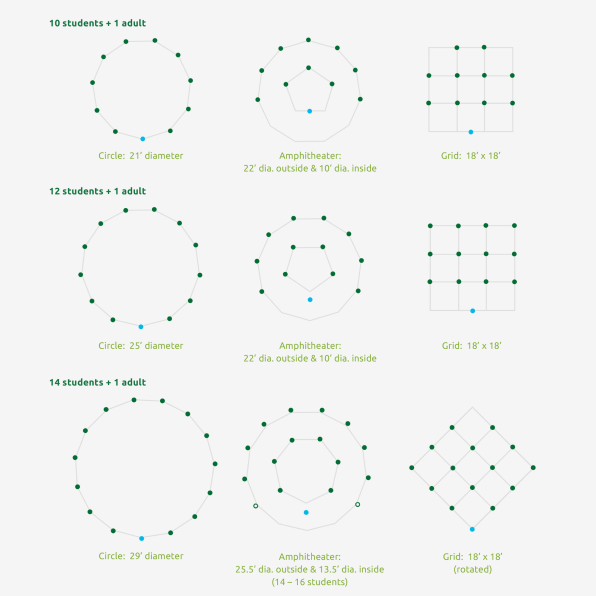
Some schools are already making this switch, and trying to serve as models for others to follow. In 2017, the San Mateo County Office of Education started an Environmental Literacy and Sustainability Initiative that focuses on increasing knowledge about environmental issues. It does so partly by integrating natural and outdoor spaces into school curricula. Andra Yeghoian, the initiative’s coordinator, says the program has been working to ensure that students at every grade level in its roughly 270 schools have daily access to outdoor learning and play spaces. “So that was our goal before COVID-19,” she says. “And now COVID-19 has really flipped that to be that every kid at every grade level in every subject area can do the majority of their learning outside.”
As a partner in the National COVID-19 Outdoor Learning Initiative, some San Mateo County schools are now conducting pilot projects to test out the viability of its designs and recommendations.
For those schools that have already begun creating outdoor classrooms and learning spaces, the push has been easier. But Danks estimates that only about 15% to 20% of schools in the U.S. have these kinds of facilities. “The other 80%, 85% of schools have probably never taken a class outside to do hands-on learning on their own site,” she says.
This is where the initiative’s working groups come in. Each is developing a set of two-page recommendations that will provide simple instructions for dealing with common outdoor complications like cold and hot weather, spatially distanced seating arrangements, dust, and insects. Eventually, the recommendations will be published as a free online guidebook.
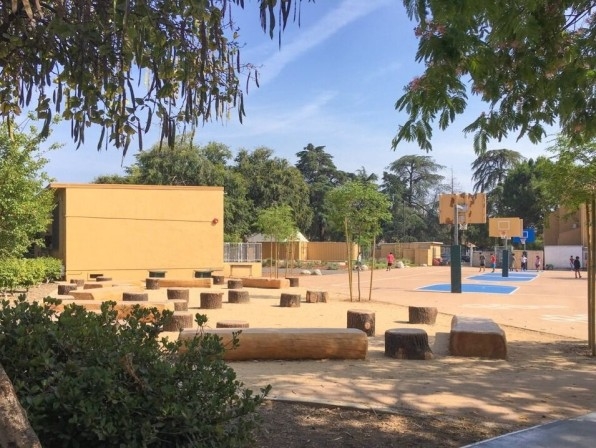
A big part of this work is the physical infrastructure of teaching outdoors. Claire Latané is an assistant professor in Cal Poly Pomona’s landscape architecture department and is leading a group of volunteer landscape architects who are working directly with school officials to identify optimal spaces and sizes of outdoor classrooms. She says about 100 designers have signed up to help, and the first teams are using aerial imagery of campuses to find places with adequate shade, either under trees or carports, and ensuring any changes to school grounds comply with local fire and accessibility codes. They’re also advising on how the locations of outdoor classrooms can address weather concerns. “Having designers from across the country is vital for understanding those unique conditions,” Latané says.
The group is also creating a series of case studies to show what this all looks like in practice, and, importantly, what it all might cost. Nancy Striniste, a landscape designer who’s written a book on natural playscapes, has been conducting school site visits around Washington, D.C., to help create these case studies. She says schools would be surprised to know how much space they can take advantage of. On one elementary school visit, she says she found outdoor space for all of the school’s 39 classes. “It was just amazing to me to see how possible it was,” she says.
Three case studies have been published on Green Schoolyards America’s website, and offer suggestions for schools in different climates, from a hot and dry location in suburban Los Angeles to the mild climate of the Bay Area to the four distinct seasons of Northern Virginia. Each provides three different adaptation scenarios and varying student capacity and price points. At a low cost of just a few thousand dollars, schools use only their existing outdoor shade and tree-covered areas, augmented with affordable seating such as hay bales and additional clothing for unexpected cold or wet weather. A medium cost adaptation might cost $10,000 or $20,000 and would increase outdoor capacity by installing temporary shade structures or tents, with outdoor heaters where necessary. Larger investments could create outdoor facilities that can be used permanently, with costs climbing into the hundreds of thousands. A spreadsheet with cost estimates is also available.
Funding is a major concern, and Yeghoian says school district money is particularly tight right now. “We’re still in such an unsure context. We’re not sure, do we invest in indoor spaces and just really beef up our custodial staff, or do we invest in these outdoor spaces and really beef up our outdoor infrastructure?” she says. She’s hoping that once schools see the costs of creating even minimal outdoor learning spaces, they’ll be willing to shift budgets. But with the start of the school year looming, time is tight. “Can we have these kinds of conversations, can we make that shift quickly, those are some of the challenges,” she says. “But of course public schools need an absolute influx of funding for this type of thing from the state. It would be totally necessary to scale this up.”
Staffing is another concern, especially if schools can only shift some students outside. If classes are split, with half safely spaced inside and half outside, they’ll need double the educators. Danks says there’s a relatively simple solution to be found in furloughed employees from educational institutions like museums and zoos. Familiar with leading classes on tours and providing educational field trips, these educators could simply bring their skills to campus.
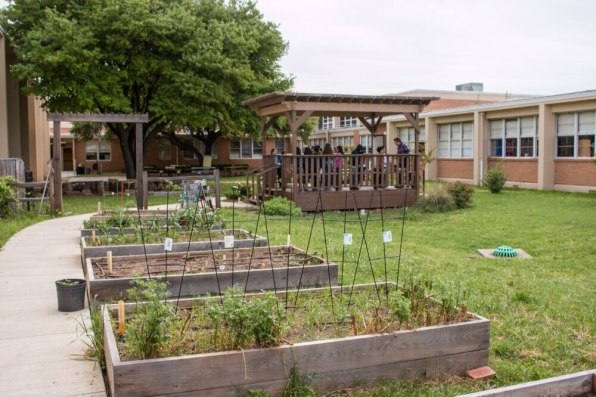
The whole process of transitioning to outdoor education doesn’t have to be tortuous, Danks says. “In the last pandemic in 1918 to 1920, with tuberculosis and the Spanish flu, schools around the world went outside and took their classes, even just moved their desks right outside their buildings,” Danks says. “They didn’t overthink it, they just moved their space to where the air was fresher. And we can do the same. So how do we do it most simply and easily and cheaply is what were exploring.”
But with an estimated 130,000 elementary and secondary schools across the country under state and county level health regulations and governed by district-level budgets, there are thousands of potential permutations for how things can move forward. Yeghoian says schools are used to dealing with regulations and financial constraints, and they’ll have to continue to adapt.
“One best possible next step is to help folks keep their major goal in mind. What is it that you’re trying to do? Are you trying to get as many kids back as possible? Because if you are, this is it,” she says of the initiative’s outdoor education guidance. “You don’t really need to look anywhere else.”
Danks says the extreme conditions created by the pandemic may be opening the door for people to consider what she’s long recommended, that more education happen in natural outdoor settings. But even so, it’s hard to see this as a great success for the movement.
“I think this is predominantly a moment of education triage,” she says. “We have a massive education system that is failing to educate students because the constraints are being thought of in a way that needs to be more creative.”
(39)

